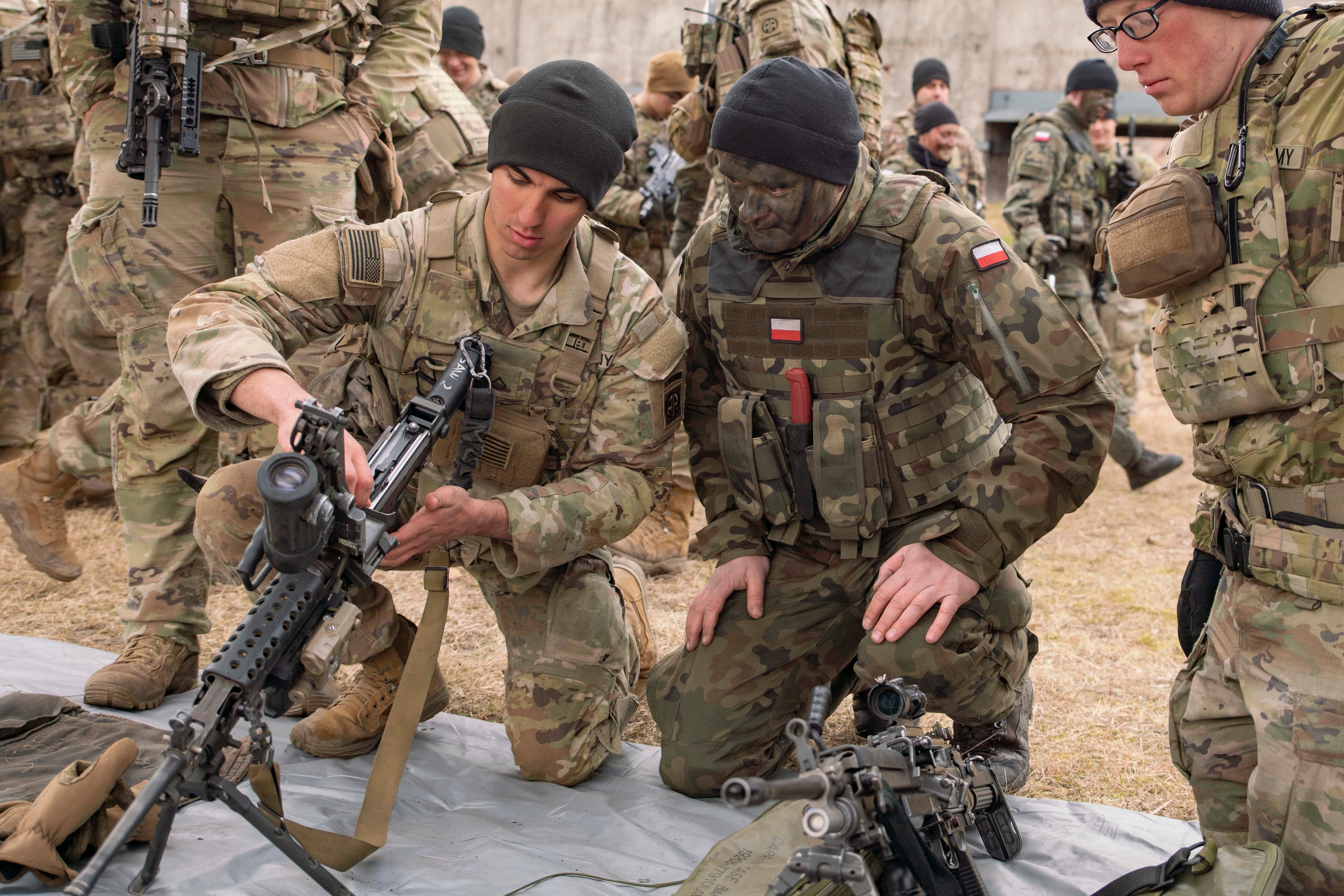When the year began, there were about 80,000 U.S. troops based in Europe, either permanently stationed or participating in heel-to-toe rotations from bases stateside. But as Russia amassed more troops on Ukraine’s border and then launched a full-on invasion in late February, the number of Americans posted along NATO’s eastern front has swelled, with more than 90,000 throughout Europe.
Those troops are in place temporarily, to reassure allies, the Pentagon has said, but a senior defense official told reporters Friday that the ongoing war in Ukraine has forced the Defense Department to re-think its numbers in Europe.
“There’s been no posture decisions, permanent posture decisions ... there’s no serious negotiations with other nations in terms of permanent posture right now,” the official said. “But I think it’s safe to assume that the security environment in Europe is now radically different than it was before.”
In recent years, the U.S. has leaned more on rotational forces training with local troops from the Baltics down to Bulgaria, as permanent bases in Germany have closed.
Now, with Russia’s unprovoked hostility considered a very real threat to NATO countries, there may be a call for even more U.S. troops in Europe, either permanent or rotational.
“But it’s safe to assume we have, frankly, our allies, who will be looking at what the posture should be like, going forward, longer term ― that was a topic of discussion at the NATO summit yesterday,” the official said. “No decisions made, of course. No specific proposals debated or discussed, but the issue of what the security posture in Europe needs to look like long-term, absolutely is being discussed.”
In the immediate future, the official said, U.S. and NATO leadership are considering how many troops are needed to bolster eastern front countries as Russia’s invasion continues.
RELATED

To date, the U.S. has activated about 11,600 troops for the mission: 4,700 from the 82nd Airborne Division to Poland; 300 from the XVIII Airborne Corps to Germany; 1,000 from the 2nd Cavalry Regiment to Romania; 800 from the 173rd Airborne Brigade Combat Team to Latvia; 100 F-35 Lightning II air crew to Estonia, Lithuania and Romania; 100 AH-64 Apache aircrew to Poland and the Baltic states; 3,800 from 1st Armored Brigade Combat Team, 3rd Infantry Division and its sustainment unit to Germany; 150 airmen from Fairchild Air Force Base, Washington; 40 members of an air support operations unit to Romania and Poland; 300 ordnance and maintenance soldiers to Germany; and 300 members of V Corps to Germany and Poland.
The U.S. has committed another 2,000 or so to the NATO Response Force, but the Pentagon hasn’t yet identified those units for deployment.
“Right now our focus is on whether or not there needs to be additional temporary deployments to shore up the eastern flank given, what’s going on in Ukraine,” the senior defense official said.
Meghann Myers is the Pentagon bureau chief at Military Times. She covers operations, policy, personnel, leadership and other issues affecting service members.




